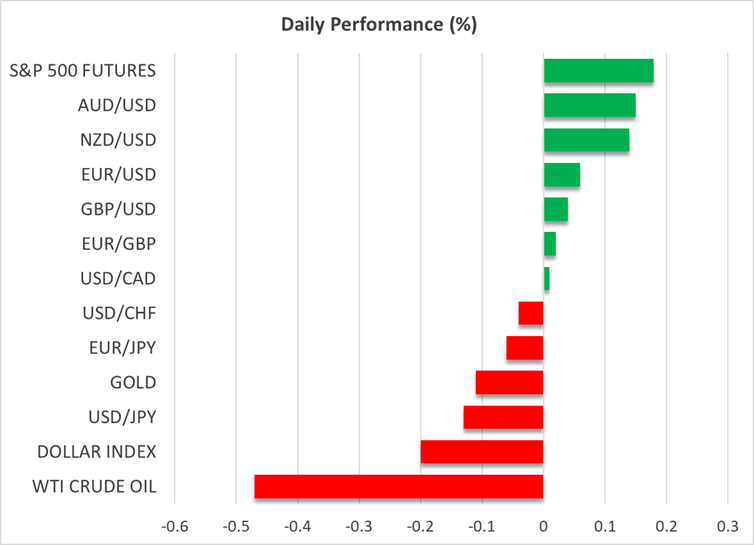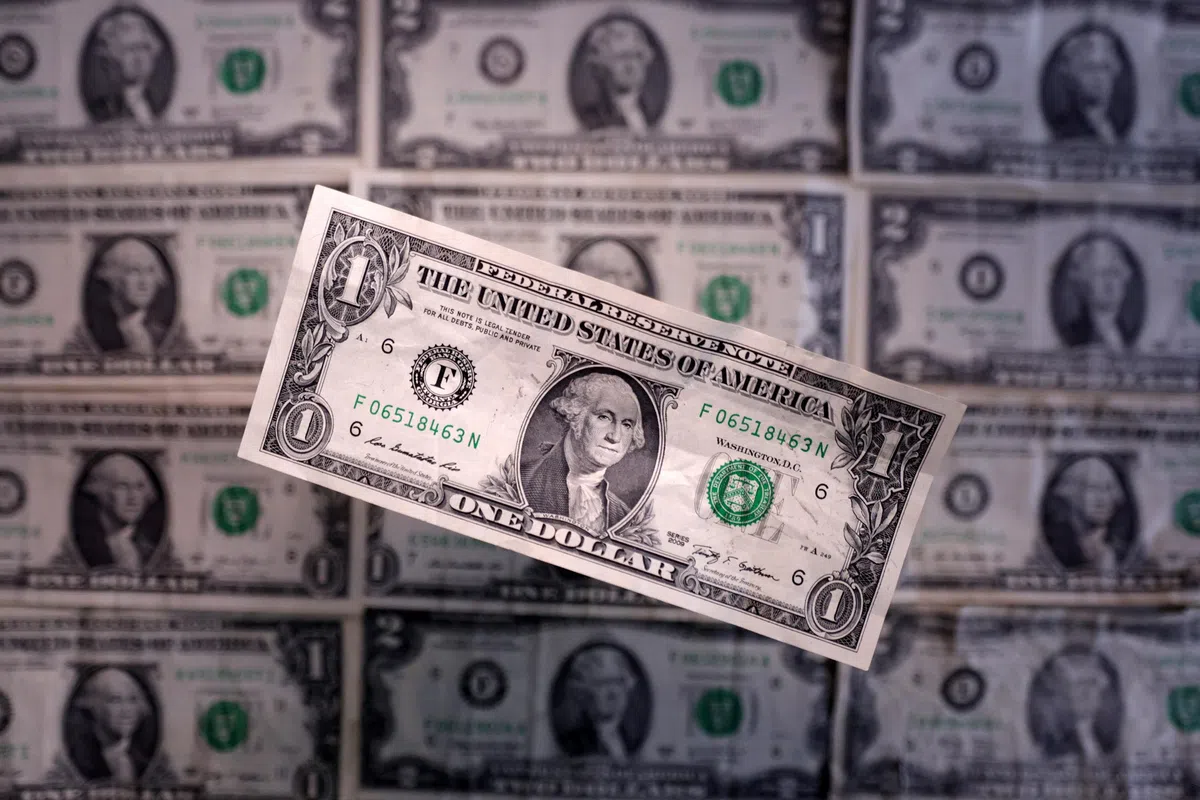- Gold slips below $4,000 as Israel approves Gaza peace plan
- AI-fuelled rally loses steam but no sign of major correction for stocks
- Fed caution lifts dollar to fresh two-month highs
- Yen strengthens as Takaichi premiership in doubt after coalition collapses
Gold Retreats Amid Stronger Dollar and Gaza Ceasefire
’s incredible seven-week rally appears to have run into some trouble as the precious metal is retreating from Wednesday’s all-time high of $4,059/oz. It slipped below the crucial $4,000 level yesterday as news that Israel and Hamas have agreed on the first phase of a 20-point peace plan sparked some profit taking, seen by some as well overdue. The resurgent US dollar is also limiting gold’s advance.
Under pressure from Trump, Israel’s cabinet ratified the ceasefire deal in the early hours of Friday, paving the way for the US president to visit the country on Sunday. Although there are doubts whether the negotiations will go as smoothly for the more difficult parts of the US proposal, this does mark a significant turning point in the two-year fighting that has ravaged Gaza and even nearly triggered a full-scale war with Iran.
But it’s more than geopolitical risks that have been feeding gold’s uptrend, so the end-of-week pullback is likely to be a temporary setback, and the precious metal is holding onto its weekly gains. Moreover, the fact that broke above $50/oz on Thursday for the first time suggests that investors are still hedging their bets in their droves.
Meanwhile, have slumped by 2% since Wednesday, as easing tensions in the oil-rich Middle East has hindered the rebound attempt from earlier in the week.
Wall Street Hit by Mild Pullback
Shares on Wall Street ended yesterday’s session lower amid some signs that the latest upswing, mainly driven by tech and AI stocks, is running out of juice. Warnings about overstretched AI valuations has likely given rise to some caution as the Q3 earnings season slowly gets underway.
The comparisons with the dot-com bubble are plenty, but the main concern with the current rally is not so much about profitability, but the billions being poured by companies into AI investments. Nvidia is probably the best example why the AI euphoria may not be over just yet as it continues to enjoy strong demand for its chips. Its stock bucked the broader market trend yesterday to close higher.
Both the and posted small losses but are still headed for weekly gains, while the is on track to end the week in the red. Equity markets globally are mixed today, with the most notable moves seen in Japan where political troubles for newly elected LDP leader Sanae Takaichi pulled the index 1% lower.
Yen Finds Some Footing as Takaichi Faces First Test
Talks between the LDP and its junior coalition partner, Komeito, on renewing their decades-old alliance broke down on Friday, with the latter’s leader saying they will withdraw from the coalition.
The disagreement over reforming party funding rules means that Takaichi will need to find support from other parties to win parliament’s backing to become Japan’s next prime minister. But even then, the resulting minority government may not last very long.
The has jumped higher today as the possibility of Takaichi not becoming PM or at the very least being forced to work more closely with other parties has dashed the prospect of significantly looser fiscal and monetary policies in Japan.
The growing threat of intervention is also slowing the yen’s selloff and the has dipped below 153 yen today.
Dollar Off Highs After Solid Week
The yen’s bounce back has spurred a pause in the dollar’s own recovery. The has had its strongest week since at least the end of July as investors have had to pare back some of their more dovish expectations for Fed rate cuts.
Whilst the growing split within the is visible for all to see, officials on balance remain cautious about moving too quickly in slashing rates.
The ongoing government shutdown and its impact on the US economy doesn’t seem to be a big worry for the Fed just yet, particularly as policymakers have no official data to sift through during the shutdown.







